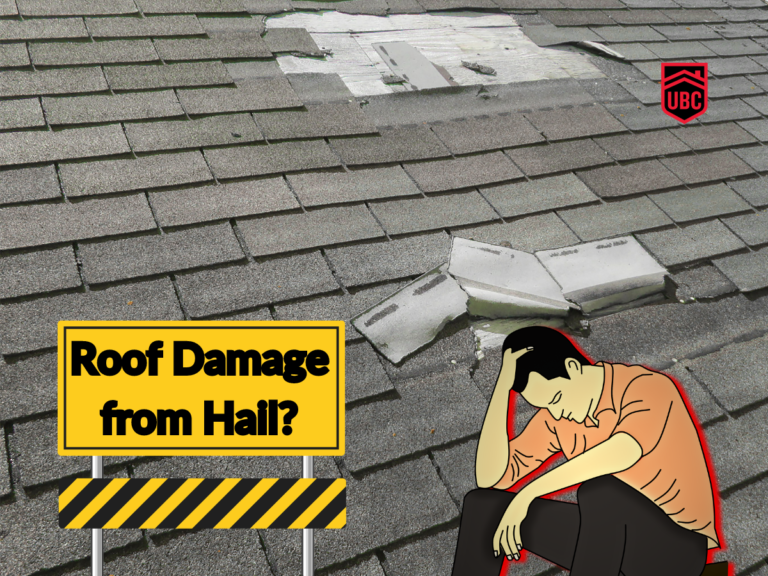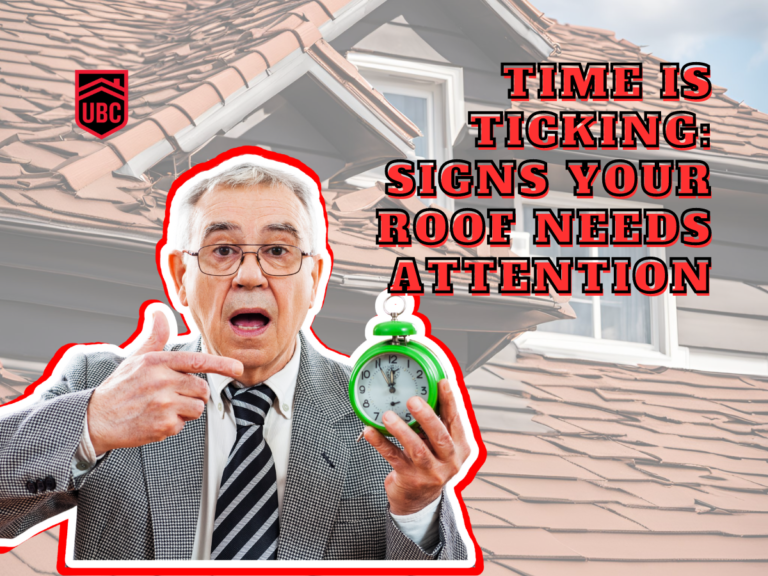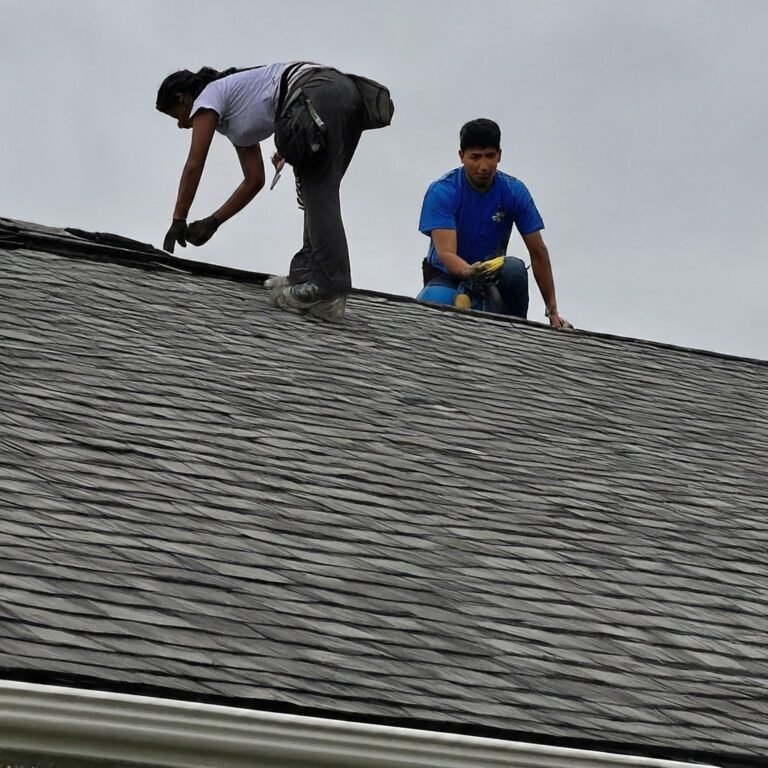Is It Time for a New Roof? 5 Signs You Shouldn't Ignore

Is It Time for a New Roof? 5 Signs You Shouldn’t Ignore
Signs of an aging roof can go unnoticed, but neglecting them can lead to costly consequences. Protect your home and family by being vigilant for these key indicators that your roof may need attention. From visible wear and tear to increased energy costs, addressing these signs promptly can prevent water damage, structural issues, and more. Stay informed and proactive to ensure your roof remains a reliable shield against the elements.
The Importance of Checking for Visible Damage
1. Visible Damage and Wear
Visible damage to your roof, such as missing, cracked, or curled shingles, can be a clear indication that your roof is in need of attention. These issues can lead to water intrusion, leaks, and moisture damage if left unchecked. Additionally, dark spots or streaks on your roof may signify the growth of algae or moss, which can trap moisture and cause premature wear.
Signs of Visible Damage
For signs of visible damage on your roof, look out for missing, cracked, or curled shingles, as well as dark spots or streaks. These issues can compromise your roof’s ability to protect your home from the elements. If you notice any of these signs, it’s important to address them promptly to prevent further damage and potential structural issues.
Factors Influencing Roof Lifespan
2. Age of Your Roof
Little but significant, the age of your roof is a major factor in determining its lifespan. Depending on the material used, the quality of installation, and environmental conditions, roofs have varying lifespans. For instance, asphalt shingles typically last 15-25 years while metal roofs can last 40-70 years. Keeping records of your roof’s installation date and repairs can help track its age and the potential need for replacement.
Factors Affecting Roof Lifespan
Affecting the longevity of your roof are several key factors. Proper attic ventilation and insulation are crucial for maintaining temperature regulation and preventing excessive strain on your HVAC system. Additionally, damage or missing insulation can lead to increased energy costs, while gaps or cracks in your roof can compromise its efficiency. Recognizing these factors and addressing them promptly can help extend the lifespan of your roof.
- Understanding the importance of attic ventilation
- Recognizing the impact of damaged insulation on energy costs
Factors Contributing to Roof Efficiency
3. Increased Energy Costs
While your roof plays a significant role in your home’s energy efficiency, an abrupt rise in energy bills may signify inadequate insulation due to roof issues.
Factors Contributing to Reduced Roof Efficiency
Insufficient attic ventilation can result in overheating, leading to escalated energy expenses.
- Damaged or missing insulation
- Gaps or cracks
For improved roof efficiency, it’s crucial to address these issues promptly to maintain a comfortable living environment.
4. Water Stains or Leaks
Noticing water stains or leaks inside your home is a major red flag that your roof needs attention. These signs indicate that water is finding its way through your roof and into your living space. Even small leaks can lead to significant damage over time, including mold growth, structural damage, and electrical hazards.
Consequences of Unaddressed Leaks
For homeowners, ignoring water stains or leaks can lead to serious consequences. The persistence of water intrusion can weaken your home’s structural elements, causing damage to walls, ceilings, and support beams. Additionally, mold and mildew growth from moisture intrusion can pose health risks, especially for those with allergies or respiratory issues. Electrical hazards from water leaking near wiring or fixtures also present a serious safety concern.
The importance of promptly addressing water stains or leaks cannot be overstated. Over time, the damage caused by unaddressed leaks can compromise your home’s integrity and safety. Seeking professional help to identify and repair the source of the water intrusion is crucial to prevent further damage and maintain a healthy living environment for you and your family.
Another critical aspect to consider is the potential financial impact of unaddressed leaks. Delaying repairs can lead to more extensive damage, resulting in higher repair costs down the line. By taking proactive steps to address water stains or leaks as soon as they are noticed, homeowners can save both time and money in the long run.
5. Granule Loss
Many asphalt roofs experience granule loss over time, which can be a sign of wear and tear on your roof. These granules provide protection from UV damage and add color to your shingles.
Signs of Excessive Granule Loss
Any accumulation of granules in your gutters, bare or smooth patches on shingles, or inconsistent coloring across your roof are signs of excessive granule loss. If you notice these signs, it may indicate that your shingles are nearing the end of their lifespan and may need to be replaced.
A professional roofing contractor can assess the extent of granule loss and recommend the appropriate repairs or replacement to ensure your roof remains in top condition.
The Importance of Professional Inspections
Once again, undertaking a professional inspection of your roof is crucial to ensure that any potential issues are identified and addressed promptly. A qualified roofing contractor has the knowledge and expertise to thoroughly assess your roof’s condition, pinpointing problems that may not be visible to the untrained eye. By scheduling regular inspections, you can extend the lifespan of your roof and prevent costly repairs in the future.
What to Expect from a Professional Inspection
Professional roofing inspections provide a comprehensive evaluation of your roof’s health, covering aspects such as the condition of shingles, flashing, and ventilation. During an inspection, the roofer will look for signs of water intrusion, assess insulation, and provide detailed recommendations for any necessary repairs or replacements. By investing in professional inspections at least once a year, homeowners can ensure their roofs remain in optimal condition and avoid potential hazards in the long run.
From the moment you schedule a professional inspection for your roof, you can expect a thorough examination of all its components. The roofer will carefully assess the integrity of shingles, flashing, and ventilation systems, checking for any signs of wear or damage. Additionally, they will inspect your attic for moisture intrusion, and water stains on ceilings, and ensure that your insulation is effectively regulating your home’s temperature. Following the inspection, you will receive a detailed report outlining the findings and recommendations for any necessary repairs or replacements. By relying on the expertise of a roofing professional, you can rest assured that your roof is in good hands.
Peace of Mind Under Your Roof
Your roof is a critical component of your home, protecting you and your family from the elements. By being aware of the signs that your roof may need attention, you can proactively address issues and ensure your home remains safe and comfortable. If you notice any of the signs discussed in this article, or if your roof is approaching the end of its expected lifespan, don’t hesitate to contact a trusted roofing professional.
For a comprehensive roof inspection and a free quote, contact United Building Contractors (UBC), your trusted local roofing company. Our team of experienced professionals will thoroughly assess your roof’s condition and provide expert recommendations for repairs or replacement. We use only top-quality materials and stand behind our work with industry-leading warranties. Call us today at 952-800-ROOF (7663) or use our instant estimate tool on our website to schedule your inspection. Don’t wait until a minor issue becomes a major problem – trust UBC to keep your roof in top shape.
FAQ
Q: What are some visible signs that indicate it might be time for a new roof?
A: Some visible signs include missing, cracked, or curled shingles, dark spots or streaks, and sagging or uneven roof planes.
Q: How does the age of a roof factor into determining if it needs to be replaced?
A: The age of a roof is significant in determining if it needs replacement. Asphalt shingles typically last 15-25 years, metal roofs last 40-70 years, and tile or slate roofs can last over 50 years. Keeping track of installation dates and repairs is crucial.
Q: Why is it important to have regular professional inspections of your roof?
A: Professional inspections help identify potential issues that may not be obvious, assess overall roof condition, check for water intrusion, ventilation, and insulation, and provide detailed reports with recommendations for repairs or replacement. It’s recommended to have your roof inspected at least once a year and after major weather events.






